单点登录:
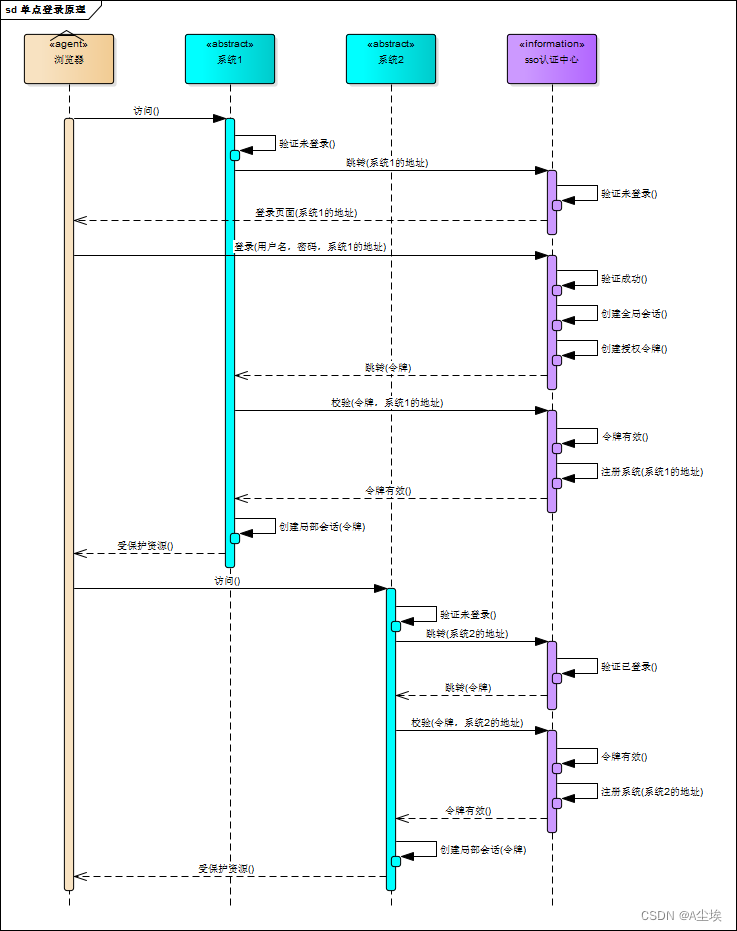
- SSO服务端和SSO客户端直接是通过授权以后发放Token的形式来访问受保护的资源
- 相对于浏览器来说,业务系统是服务端,相对于SSO服务端来说,业务系统是客户端
- 浏览器和业务系统之间通过会话正常访问
- 不是每次浏览器请求都要去SSO服务端去验证,只要浏览器和它所访问的服务端的会话有效它就可以正常访问
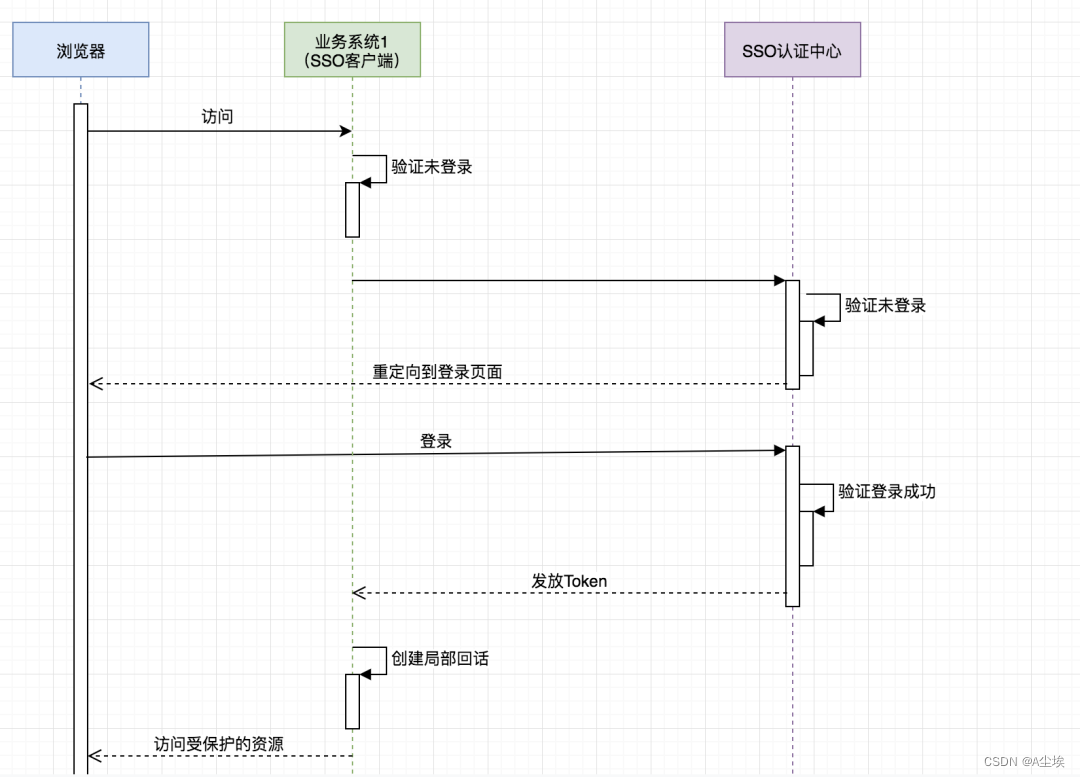
Spring Security 、OAuth2、JWT、SSO
SSO是一种思想,或者说是一种解决方案,是抽象的,我们要做的就是按照它的这种思想去实现它
OAuth2是用来允许用户授权第三方应用访问他在另一个服务器上的资源的一种协议,它不是用来做单点登录的,但我们可以利用它来实现单点登录
想要访问这这一资源就需要用户登录并授权,OAuth2服务端负责令牌的发放等操作,这令牌的生成我们采用JWT。也就是说JWT是用来承载用户的Access_Token的
Spring Security是用于安全访问的
一、依赖
spring-security-oauth2-autoconfigure
<?xml version="1.0" encoding="UTF-8"?>
<project xmlns="http://maven.apache.org/POM/4.0.0" xmlns:xsi="http://www.w3.org/2001/XMLSchema-instance"
xsi:schemaLocation="http://maven.apache.org/POM/4.0.0 http://maven.apache.org/xsd/maven-4.0.0.xsd">
<modelVersion>4.0.0</modelVersion>
<parent>
<groupId>org.springframework.boot</groupId>
<artifactId>spring-boot-starter-parent</artifactId>
<version>2.1.3.RELEASE</version>
<relativePath/> <!-- lookup parent from repository -->
</parent>
<groupId>com.cjs.sso</groupId>
<artifactId>oauth2-sso-auth-server</artifactId>
<version>0.0.1-SNAPSHOT</version>
<name>oauth2-sso-auth-server</name>
<properties>
<java.version>1.8</java.version>
</properties>
<dependencies>
<dependency>
<groupId>org.springframework.boot</groupId>
<artifactId>spring-boot-starter-data-jpa</artifactId>
</dependency>
<dependency>
<groupId>org.springframework.boot</groupId>
<artifactId>spring-boot-starter-data-redis</artifactId>
</dependency>
<dependency>
<groupId>org.springframework.boot</groupId>
<artifactId>spring-boot-starter-security</artifactId>
</dependency>
<dependency>
<groupId>org.springframework.security.oauth.boot</groupId>
<artifactId>spring-security-oauth2-autoconfigure</artifactId>
<version>2.1.3.RELEASE</version>
</dependency>
<dependency>
<groupId>org.springframework.boot</groupId>
<artifactId>spring-boot-starter-thymeleaf</artifactId>
</dependency>
<dependency>
<groupId>org.springframework.boot</groupId>
<artifactId>spring-boot-starter-web</artifactId>
</dependency>
<dependency>
<groupId>org.springframework.session</groupId>
<artifactId>spring-session-data-redis</artifactId>
</dependency>
<dependency>
<groupId>mysql</groupId>
<artifactId>mysql-connector-java</artifactId>
<scope>runtime</scope>
</dependency>
<dependency>
<groupId>org.projectlombok</groupId>
<artifactId>lombok</artifactId>
<optional>true</optional>
</dependency>
<dependency>
<groupId>org.springframework.boot</groupId>
<artifactId>spring-boot-starter-test</artifactId>
<scope>test</scope>
</dependency>
<dependency>
<groupId>org.springframework.security</groupId>
<artifactId>spring-security-test</artifactId>
<scope>test</scope>
</dependency>
<dependency>
<groupId>org.apache.commons</groupId>
<artifactId>commons-lang3</artifactId>
<version>3.8.1</version>
</dependency>
<dependency>
<groupId>com.alibaba</groupId>
<artifactId>fastjson</artifactId>
<version>1.2.56</version>
</dependency>
</dependencies>
<build>
<plugins>
<plugin>
<groupId>org.springframework.boot</groupId>
<artifactId>spring-boot-maven-plugin</artifactId>
</plugin>
</plugins>
</build>
</project>
启动类添加@EnableAuthorizationServer
二、 application.yml
spring:
datasource:
url: jdbc:mysql://localhost:3306/permission
username: root
password: 123456
driver-class-name: com.mysql.jdbc.Driver
jpa:
show-sql: true
session:
store-type: redis
redis:
host: 127.0.0.1
password: 123456
port: 6379
server:
port: 8080
三、Config配置
客户端以及登录用户这些配置存储在数据库,为了减少数据库的查询次数,可以从数据库读出来以后再放到内存中
@Configuration
@EnableAuthorizationServer
public class AuthorizationServerConfig extends AuthorizationServerConfigurerAdapter{
@Autowired
private DataSource dataSource;
@Override
public void configure(AuthorizationServerSecurityConfigurer security)throws Exception{
security.allowFormAuthenticationForClients();
security.tokenKeyAccess("isAuthenticated()");
}
@Override
public void configure(ClientDetailsServiceConfigurer clients) throws Exception {
clients.jdbc(dataSource);
}
@Override
public void configure(AuthorizationServerEndpointsConfigurer endpoints) throws Exception{
endpoints.accessTokenConverter(jwtAccessTokenConverter());
endpoints.tokenStore(jwtTokenStore());
//endpoints.tokenServices(defaultTokenServices());
}
/*@Primary
@Bean
public DefaultTokenServices defaultTokenServices() {
DefaultTokenServices defaultTokenServices = new DefaultTokenServices();
defaultTokenServices.setTokenStore(jwtTokenStore());
defaultTokenServices.setSupportRefreshToken(true);
return defaultTokenServices;
}*/
//Token存储采用的是JWT
@Bean
public JwtTokenStore jwtTokenStore() {
return new JwtTokenStore(jwtAccessTokenConverter());
}
@Bean
public JwtAccessTokenConverter jwtAccessTokenConverter() {
JwtAccessTokenConverter jwtAccessTokenConverter = new JwtAccessTokenConverter();
jwtAccessTokenConverter.setSigningKey("cjs"); // Sets the JWT signing key
return jwtAccessTokenConverter;
}
}
四、WebSecurityConfig
@Configuration
@EnableWebSecurity
public class WebSecurityConfig extends WebSecurityConfigurerAdapter{
@Autowired
private MyUserDetailsService userDetailsService;
@Override
protected void configure(AuthenticationManagerBuilder auth)throws Exception{
auth.userDetailsService(userDetailsService).passwordEncoder(passwordEncoder());
}
@Override
public void configure(WebSecurity web)throws Exception{
web.ignoring().antMatchers("/assets/**", "/css/**", "/images/**");
}
@Override
protected void configure(HttpSecurity http) throws Exception {
http.formLogin()
.loginPage("/login")
.and()
.authorizeRequests()
.antMatchers("/login").permitAll()
.anyRequest()
.authenticated()
.and().csrf().disable().cors();
}
@Bean
public PasswordEncoder passwordEncoder() {
return new BCryptPasswordEncoder();
}
}
五、自定义登录页面
@Controller
public class LoginController {
@GetMapping("/login")
public String login() {
return "login";
}
@GetMapping("/")
public String index() {
return "index";
}
}
自定义登录页面的时候,只需要准备一个登录页面,然后写个Controller令其可以访问到即可,登录页面表单提交的时候method一定要是post,最重要的时候action要跟访问登录页面的url一样
访问登录页面的时候是GET请求,表单提交的时候是POST请求
<!DOCTYPE html>
<html xmlns:th="http://www.thymeleaf.org">
<head>
<meta charset="utf-8">
<meta http-equiv="X-UA-Compatible" content="IE=edge">
<title>Ela Admin - HTML5 Admin Template</title>
<meta name="description" content="Ela Admin - HTML5 Admin Template">
<meta name="viewport" content="width=device-width, initial-scale=1">
<link type="text/css" rel="stylesheet" th:href="@{/assets/css/normalize.css}">
<link type="text/css" rel="stylesheet" th:href="@{/assets/bootstrap-4.3.1-dist/css/bootstrap.min.css}">
<link type="text/css" rel="stylesheet" th:href="@{/assets/css/font-awesome.min.css}">
<link type="text/css" rel="stylesheet" th:href="@{/assets/css/style.css}">
</head>
<body class="bg-dark">
<div class="sufee-login d-flex align-content-center flex-wrap">
<div class="container">
<div class="login-content">
<div class="login-logo">
<h1 style="color: #57bf95;">欢迎来到王者荣耀</h1>
</div>
<div class="login-form">
<form th:action="@{/login}" method="post">
<div class="form-group">
<label>Username</label>
<input type="text" class="form-control" name="username" placeholder="Username">
</div>
<div class="form-group">
<label>Password</label>
<input type="password" class="form-control" name="password" placeholder="Password">
</div>
<div class="checkbox">
<label>
<input type="checkbox"> Remember Me
</label>
<label class="pull-right">
<a href="#">Forgotten Password?</a>
</label>
</div>
<button type="submit" class="btn btn-success btn-flat m-b-30 m-t-30" style="font-size: 18px;">登录</button>
</form>
</div>
</div>
</div>
</div>
<script type="text/javascript" th:src="@{/assets/js/jquery-2.1.4.min.js}"></script>
<script type="text/javascript" th:src="@{/assets/bootstrap-4.3.1-dist/js/bootstrap.min.js}"></script>
<script type="text/javascript" th:src="@{/assets/js/main.js}"></script>
</body>
</html>
六、定义客户端

加载用户
@Data
public class MyUser extends User {
private Integer departmentId; // 举个例子,部门ID
private String mobile; // 举个例子,假设我们想增加一个字段,这里我们增加一个mobile表示手机号
public MyUser(String username, String password, Collection<? extends GrantedAuthority> authorities) {
super(username, password, authorities);
}
public MyUser(String username, String password, boolean enabled, boolean accountNonExpired, boolean credentialsNonExpired, boolean accountNonLocked, Collection<? extends GrantedAuthority> authorities) {
super(username, password, enabled, accountNonExpired, credentialsNonExpired, accountNonLocked, authorities);
}
}
加载登录账户
@Slf4j
@Service
public class MyUserDetailsService implements UserDetailsService {
@Autowired
private PasswordEncoder passwordEncoder;
@Autowired
private UserService userService;
@Autowired
private PermissionService permissionService;
@Override
public UserDetails loadUserByUsername(String username) throws UsernameNotFoundException {
SysUser sysUser = userService.getByUsername(username);
if (null == sysUser) {
log.warn("用户{}不存在", username);
throw new UsernameNotFoundException(username);
}
List<SysPermission> permissionList = permissionService.findByUserId(sysUser.getId());
List<SimpleGrantedAuthority> authorityList = new ArrayList<>();
if (!CollectionUtils.isEmpty(permissionList)) {
for (SysPermission sysPermission : permissionList) {
authorityList.add(new SimpleGrantedAuthority(sysPermission.getCode()));
}
}
MyUser myUser = new MyUser(sysUser.getUsername(), passwordEncoder.encode(sysUser.getPassword()), authorityList);
log.info("登录成功!用户: {}", JSON.toJSONString(myUser));
return myUser;
}
}
验证
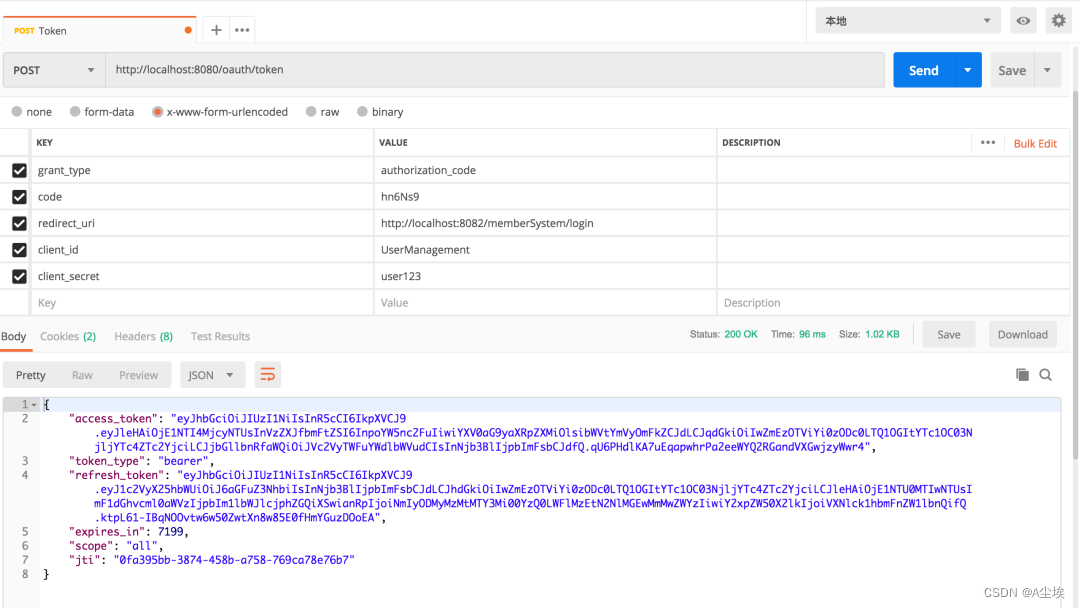
当我们看到这个界面的时候,表示认证服务器配置完成
七、两个客户端
<?xml version="1.0" encoding="UTF-8"?>
<project xmlns="http://maven.apache.org/POM/4.0.0" xmlns:xsi="http://www.w3.org/2001/XMLSchema-instance"
xsi:schemaLocation="http://maven.apache.org/POM/4.0.0 http://maven.apache.org/xsd/maven-4.0.0.xsd">
<modelVersion>4.0.0</modelVersion>
<parent>
<groupId>org.springframework.boot</groupId>
<artifactId>spring-boot-starter-parent</artifactId>
<version>2.1.3.RELEASE</version>
<relativePath/> <!-- lookup parent from repository -->
</parent>
<groupId>com.cjs.sso</groupId>
<artifactId>oauth2-sso-client-member</artifactId>
<version>0.0.1-SNAPSHOT</version>
<name>oauth2-sso-client-member</name>
<description>Demo project for Spring Boot</description>
<properties>
<java.version>1.8</java.version>
</properties>
<dependencies>
<dependency>
<groupId>org.springframework.boot</groupId>
<artifactId>spring-boot-starter-data-jpa</artifactId>
</dependency>
<dependency>
<groupId>org.springframework.boot</groupId>
<artifactId>spring-boot-starter-oauth2-client</artifactId>
</dependency>
<dependency>
<groupId>org.springframework.boot</groupId>
<artifactId>spring-boot-starter-security</artifactId>
</dependency>
<dependency>
<groupId>org.springframework.security.oauth.boot</groupId>
<artifactId>spring-security-oauth2-autoconfigure</artifactId>
<version>2.1.3.RELEASE</version>
</dependency>
<dependency>
<groupId>org.springframework.boot</groupId>
<artifactId>spring-boot-starter-thymeleaf</artifactId>
</dependency>
<dependency>
<groupId>org.thymeleaf.extras</groupId>
<artifactId>thymeleaf-extras-springsecurity5</artifactId>
<version>3.0.4.RELEASE</version>
</dependency>
<dependency>
<groupId>org.springframework.boot</groupId>
<artifactId>spring-boot-starter-web</artifactId>
</dependency>
<dependency>
<groupId>com.h2database</groupId>
<artifactId>h2</artifactId>
<scope>runtime</scope>
</dependency>
<dependency>
<groupId>org.projectlombok</groupId>
<artifactId>lombok</artifactId>
<optional>true</optional>
</dependency>
<dependency>
<groupId>org.springframework.boot</groupId>
<artifactId>spring-boot-starter-test</artifactId>
<scope>test</scope>
</dependency>
<dependency>
<groupId>org.springframework.security</groupId>
<artifactId>spring-security-test</artifactId>
<scope>test</scope>
</dependency>
</dependencies>
<build>
<plugins>
<plugin>
<groupId>org.springframework.boot</groupId>
<artifactId>spring-boot-maven-plugin</artifactId>
</plugin>
</plugins>
</build>
</project>
application.yml
server:
port: 8082
servlet:
context-path: /memberSystem
security:
oauth2:
client:
client-id: UserManagement
client-secret: user123
access-token-uri: http://localhost:8080/oauth/token
user-authorization-uri: http://localhost:8080/oauth/authorize
resource:
jwt:
key-uri: http://localhost:8080/oauth/token_key
这里context-path不要设成/,不然重定向获取code的时候回被拦截
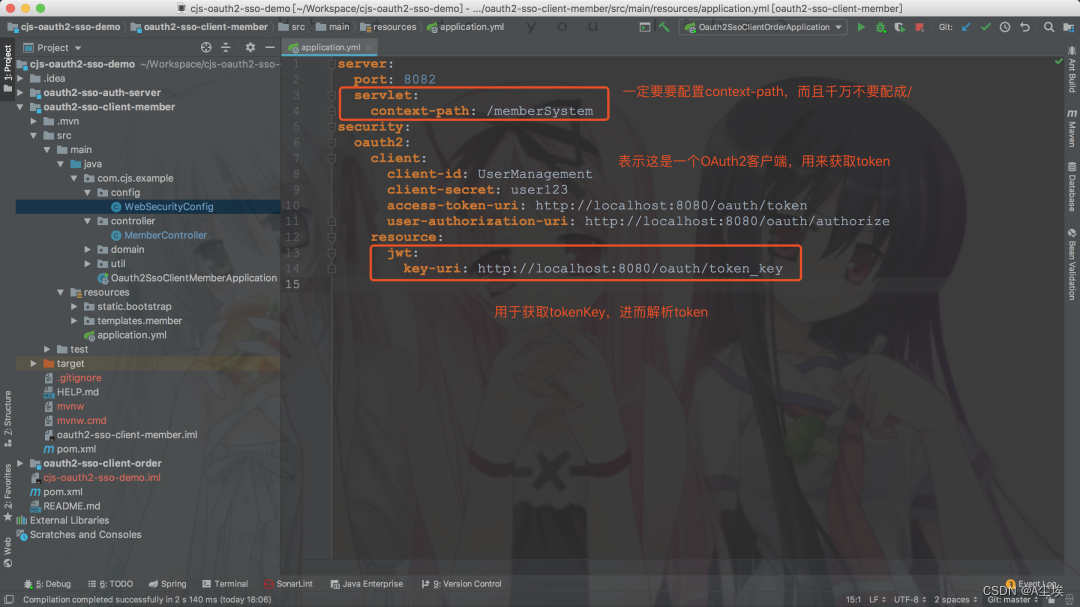
WebSecurityConfig
- 最重要的注解是@EnableOAuth2Sso
- 权限控制这里采用Spring Security方法级别的访问控制,结合Thymeleaf可以很容易做权限控制
- 如果是前后端分离的话,前端需求加载用户的权限,然后判断应该显示那些按钮那些菜单
@EnableOAuth2Sso
@Configuration
public class WebSecurityConfig extends WebSecurityConfigurerAdapter {
@Autowired
private EnvironmentUtils environmentUtils;
@Override
public void configure(WebSecurity web) throws Exception {
web.ignoring().antMatchers("/bootstrap/**");
}
@Override
protected void configure(HttpSecurity http) throws Exception {
if ("local".equals(environmentUtils.getActiveProfile())) {
http.authorizeRequests().anyRequest().permitAll();
}else {
http.logout().logoutSuccessUrl("http://localhost:8080/logout")
.and()
.authorizeRequests()
.anyRequest().authenticated()
.and()
.csrf().disable();
}
}
}
MemberController
@Controller
@RequestMapping("/member")
public class MemberController {
@GetMapping("/list")
public String list() {
return "member/list";
}
@GetMapping("/info")
@ResponseBody
public Principal info(Principal principal) {
return principal;
}
@GetMapping("/me")
@ResponseBody
public Authentication me(Authentication authentication) {
return authentication;
}
@PreAuthorize("hasAuthority('member:save')")
@ResponseBody
@PostMapping("/add")
public String add() {
return "add";
}
@PreAuthorize("hasAuthority('member:detail')")
@ResponseBody
@GetMapping("/detail")
public String detail() {
return "detail";
}
}
Order项目跟它是一样的
server:
port: 8083
servlet:
context-path: /orderSystem
security:
oauth2:
client:
client-id: OrderManagement
client-secret: order123
access-token-uri: http://localhost:8080/oauth/token
user-authorization-uri: http://localhost:8080/oauth/authorize
resource:
jwt:
key-uri: http://localhost:8080/oauth/token_key
退出
退出就是清空用于与SSO客户端建立的所有的会话,简单的来说就是使所有端点的Session失效,如果想做得更好的话可以令Token失效,但是由于我们用的JWT,故而撤销Token就不是那么容易,关于这一点,在官网上也有提到:
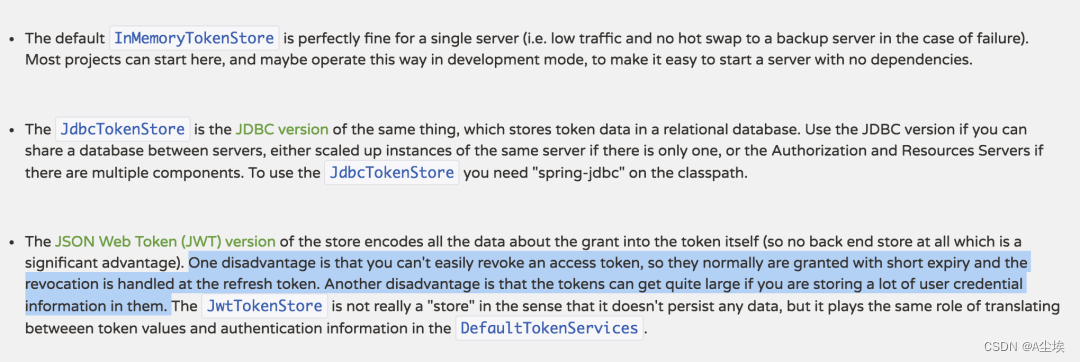
本例中采用的方式是在退出的时候先退出业务服务器,成功以后再回调认证服务器,但是这样有一个问题,就是需要主动依次调用各个业务服务器的logout
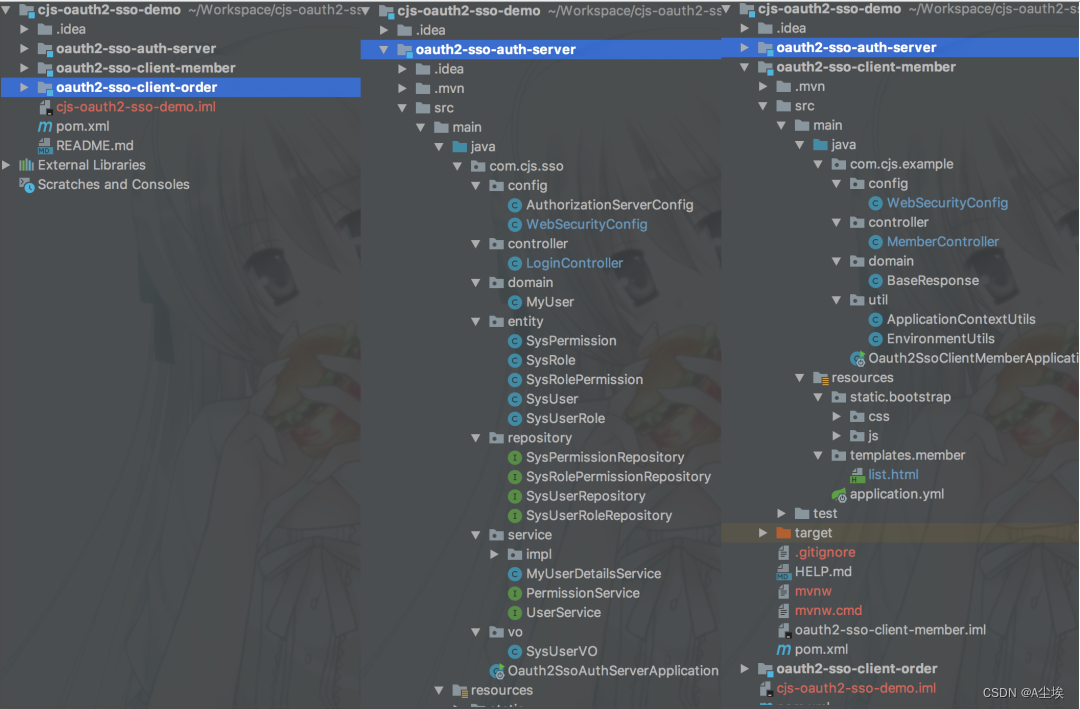


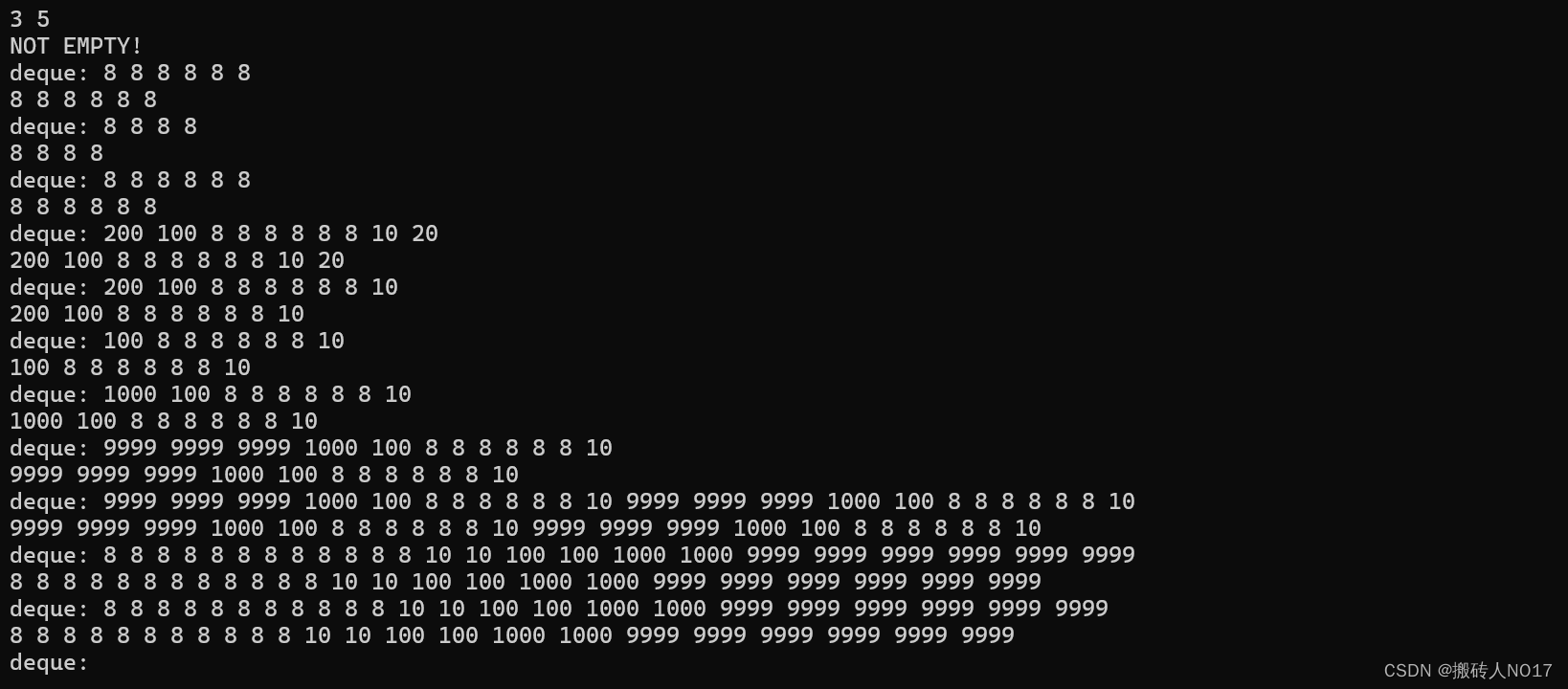

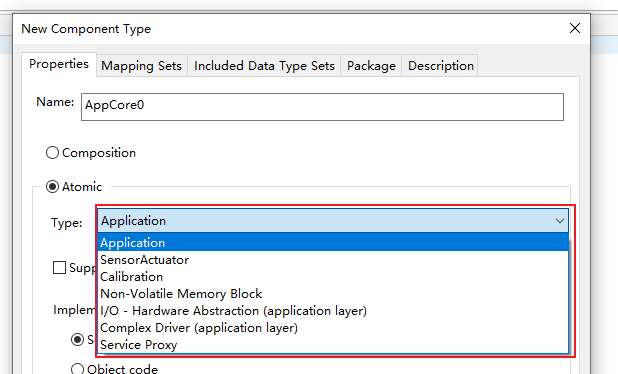
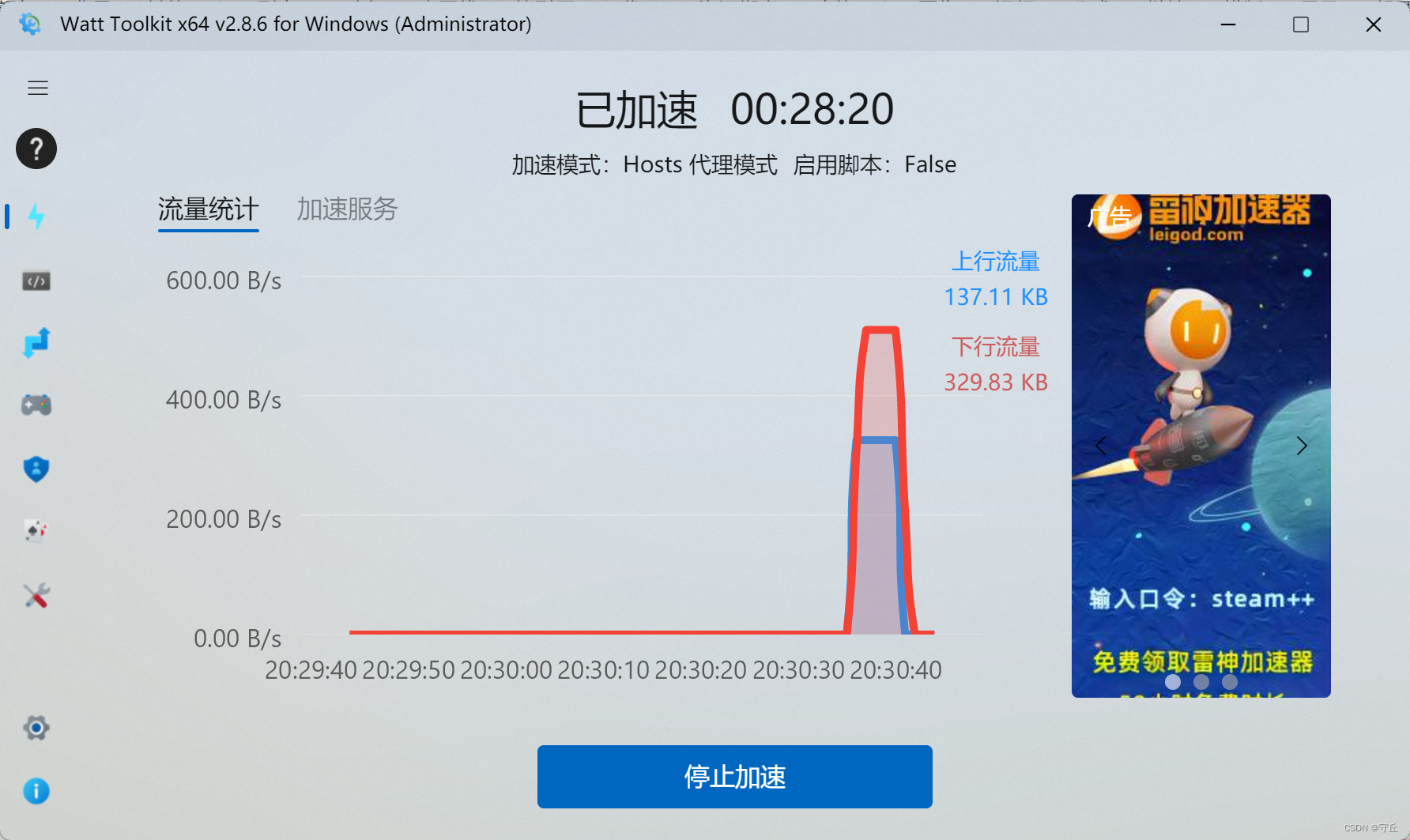

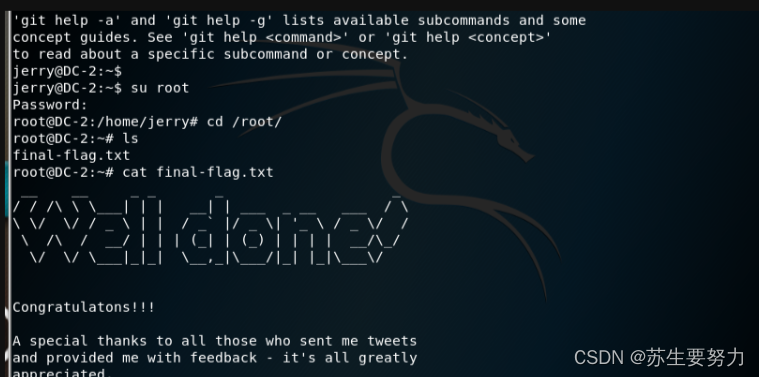

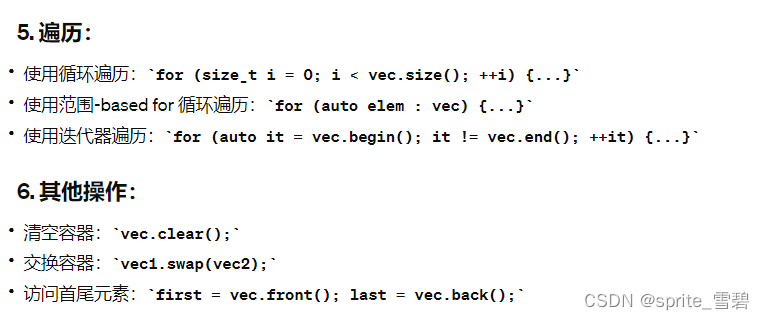
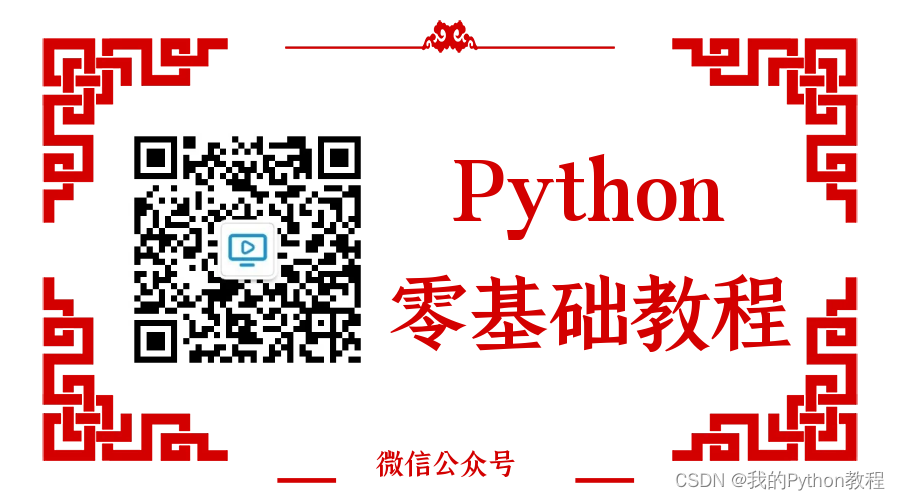
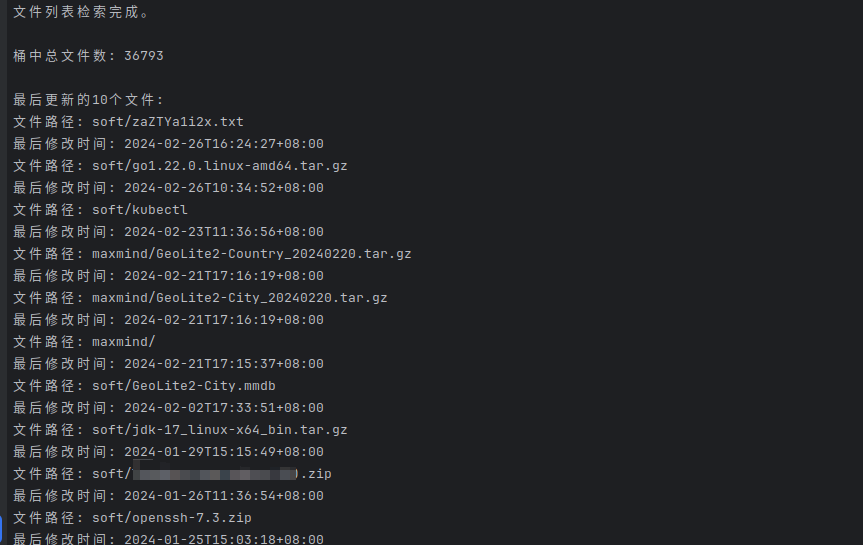





![[业务系统]人物坐骑系统介绍I](https://img-blog.csdnimg.cn/img_convert/7436abf21e1a796fb747dc41ab7db860.png)

